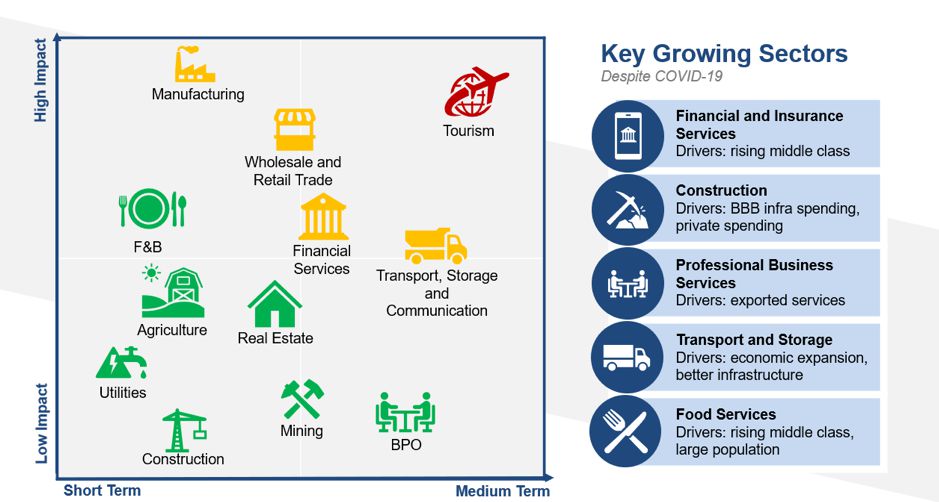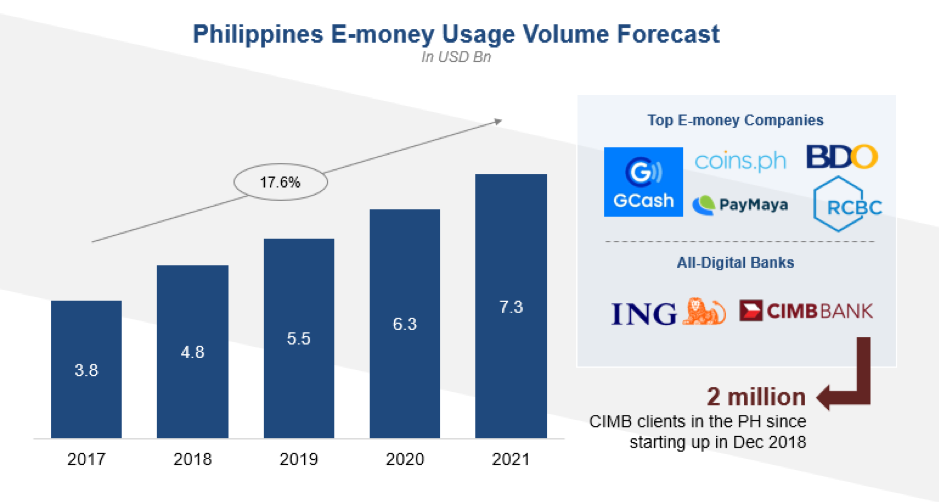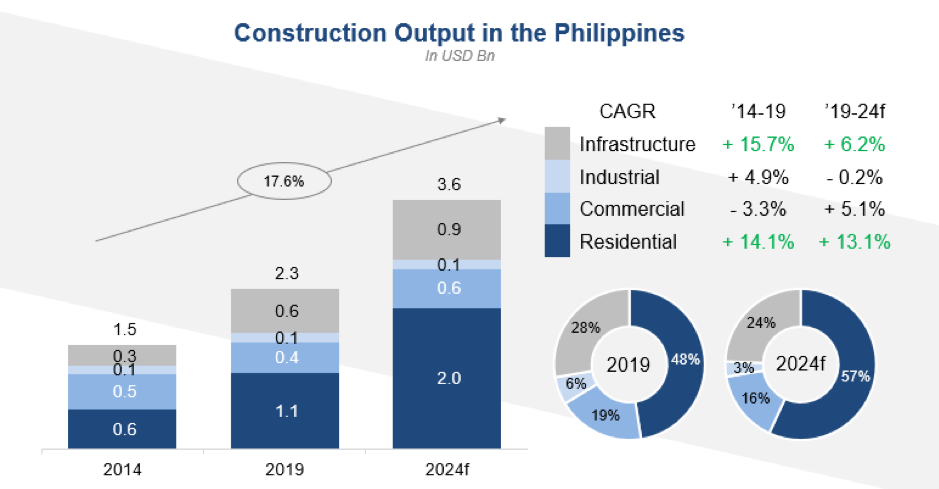The Philippines, with a recorded GDP of USD 366 billion in 2019, is rising as one of the fastest-growing economies in Southeast Asia. However, the unique market of 107 million population spread across more than 7,500 islands presents complex challenges for companies in crafting an effective strategy to expand and succeed in the local Philippines market.
Our Director, Anna Rellama, was invited to share insights on MATRADE webinar, “Internationalisation: Opportunities in the Philippines for Malaysian Companies”, along with Siti Azlina, Trade Commissioner at MATRADE, and Eric Yam, Founder, and CEO at LifeKit. Through this webinar, Malaysian companies are exposed to various opportunities in Philippine’s key growth sectors which are expected to allay their fears to achieve internationalisation and diversify revenue streams geographically.
Key Growing Sectors Amid COVID-19
Historically, the highest growth rates in the Philippines have been in construction, accommodation, and food services. However, COVID-19’s severe medium-term impact on tourism will directly impact the accommodation sector.
The webinar presented a refined list of key growth sectors in the Philippines despite COVID-19 crisis which includes financial and insurance services, construction, professional business services, transport, and storage, as well as food services.

Sources: YCP Solidiance Research & Analysis, Philippine Statistics Authority
Commercial banking and insurance, two of the largest segments financial services, are experiencing high annual growth, driven by the established top players. Commercial banking is projected to grow by 14.3% from 2019-2024, while insurance will increase by 24.4% during the same period. Also, with the developments in the e-money space, a great number of Filipinos are leapfrogging straight into e-money.
Sources: YCP Solidiance Research & Analysis, World Bank
For the construction sector, strong growth is seen in private construction, particularly in residential – the largest & fastest growing segment which accounted for 28% of the total output in 2019. The infrastructure development program “Build, Build, Build" will carry on to 2025 and drive the demand for building materials, heavy equipment, and other related products.
Source: Philippine Statistics Authority
Among the sectors that could continue even during the enhanced community quarantine (ECQ) was the business process outsourcing industry, which is among the country’s largest exports. Customer relationship continues to be the strongest selling point in the sector with USD 5.9 billion income in 2017, but sales and marketing is the fastest-growing sector with a recorded 17.1% income CAGR from 2013-2017.
Meanwhile, growth is expected to double in the transport & storage industry to 9.5% from 2019-2024, as it provides support to various established and emerging industries. Some of the growing sub-segments cover cold chain, last mile, on-demand, and e-commerce.
Another key sector is food services, which will continue to grow supported by the rising middle-class incomes and an increase in demand for convenience. The industry recorded 12% growth in transactions from food delivery applications from 2013-2018, and the average number of times an individual in Metro Manila would eat out reached 42 times. Moreover, in order to sustain their businesses, particularly with the stay-at-home and social distancing orders being enforced, food services companies are starting to digitize their operations to grow faster and deliver better and diversified services.






